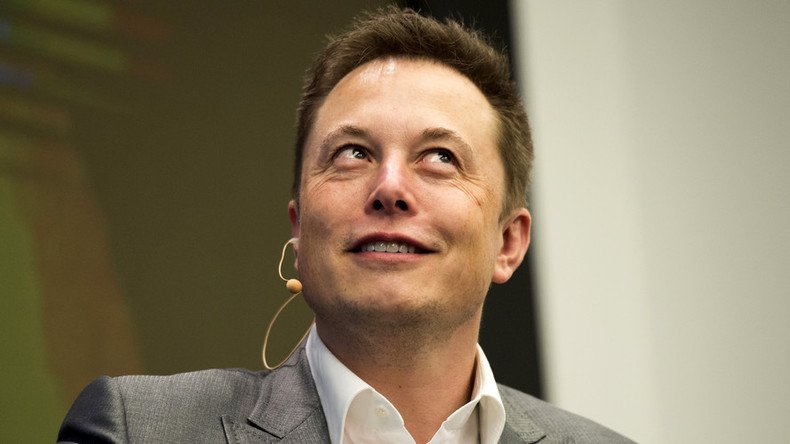Elon Musk’s Neuralink could represent next stage of human evolution

More details on Elon Musk’s futuristic Neuralink venture have been revealed in an illustrated blog post, including how the advanced technology could see us communicate wirelessly just by thinking within 10 years.
It's finally here: the full story on Neuralink. I knew the future would be nuts but this is a whole other level. https://t.co/4I44hFJzFCpic.twitter.com/YVA6dLH8uY
— Tim Urban (@waitbutwhy) April 20, 2017
Wait But Why published the 36,400-word deep dive into Neuralink using stick figure illustrations to explain in simple terms what Musk has in mind for, well, our minds.
The blog post comes one month after Musk announced Neuralink, his latest plan to merge the human brain with AI using brain implants.
Long Neuralink piece coming out on @waitbutwhy in about a week. Difficult to dedicate the time, but existential risk is too high not to.
— Elon Musk (@elonmusk) March 28, 2017
The post, however, was written by blogger and cartoonist Tim Urban after studying Neuralink for six weeks, a process which involved meeting with Musk. Urban was secretly working on his Neuralink breakdown weeks before the billionaire inventor made the official announcement.
Eager fans have been waiting to hear more about the venture ever since Musk promised a long piece on the subject the day of the announcement.
@waitbutwhy@hstaudmyer I have probably checked your website about 100 times to see if the neuralink post has been complete!
— Tolga Kana (@tolgakana) April 19, 2017
@waitbutwhy@hstaudmyer Is it done? Is it done? Is it done?
— Shankar Narayanan (@archi_alchemist) April 17, 2017
Urban said he’s “convinced that Neuralink somehow manages to eclipse Tesla and SpaceX in both the boldness of its engineering undertaking and the grandeur of its mission.”
Urban has written other detailed breakdowns on Musk’s projects for Wait But Why, including Tesla and SpaceX.
READ MORE: New Elon Musk venture aims to connect human brain with AI
Neuralink’s “whole brain interface” will use tiny brain electrodes that will eventually allow us to communicate wirelessly with the world, and to share our exact thoughts and visions without having to use spoken or written language. The brain could also learn faster and have access to all the world’s knowledge.
“I think we are about eight to ten years away from this being usable by people with no disability,” Musk said in an interview with Urban.
Transcendence 🎥 in reality. Created by @ElonMusk Called @Neuralink_Corp Explained on @waitbutwhyhttps://t.co/Puf00hwI43#AI#CDSpic.twitter.com/7qnTHBSlgj
— βyrοη (@Soulopoulos) April 22, 2017
According to Musk, who has taken on the role as Neuralink’s CEO, today’s existing technology already makes us “digitally superhuman.”
“The thing that would change is the interface,” Musk explained. “Having a high-bandwidth interface to your digital enhancements.”
Musk’s plan is to first create cutting-edge brain machine interfaces (BMIs) to be used to help people with brain injuries, building on existing technology used in medicine.
“We are aiming to bring something to market that helps with certain severe brain injuries (stroke, cancer lesion, congenital) in about four years,” Musk told Urban.
This will help fund the company to make additional breakthroughs in implantation and increasing the bandwidth needed for the technology, which will in turn create industry-wide innovation.
It will eventually lead to mass adoption of the “whole brain interface,” which will allow us to communicate wirelessly with the world in a way that feels as natural as thinking does, Urban explains.
The future seems smart nuts, if you go with Elon Musk's #Neuralink by @waitbutwhy - amplifying the human brain with an #AI gateway; pic.twitter.com/DXbQGSXWfF
— Marcus Frei (@MarcusFrei_) April 22, 2017
Musk met with over 1,000 people to find the right cross-disciplinary team of experts who each bring their own unique knowledge and expertise to create a group that can think as a single “mega-expert.”
The SpaceX CEO describes the whole-brain interface as a “digital tertiary layer,” for our brains, and says his vision isn’t so far from where we are now.
“We already have a digital tertiary layer in a sense,” Musk said, “In that you have your computer or your phone or your applications.”
“You can ask a question via Google and get an answer instantly. You can access any book or any music. With a spreadsheet, you can do incredible calculations.”
“You’re already a different creature than you would have been twenty years ago, or even ten years ago,” he said, adding people are already “kind of merged with their phone and their laptop and their applications and everything,” he added.
Musk’s plan faces a number of challenges before it can become widespread, including having enough ‘bandwidth’ to process the advanced technology and finding non-invasive and biocompatible methods to implant BMIs so they do not feel like a foreign object in our bodies.
The ten-year timeline also depends on a number of factors. “It is important to note that this depends heavily on regulatory approval timing and how well our devices work on people with disabilities.” Musk said.
Urban highlighted a number of risks associated with mass adoption of the whole brain interface, including computer-like bugs and brain hacking.
As for fears that having such technology will allow people to see your thoughts, Musk explained, “People won’t be able to read your thoughts—you would have to will it. If you don’t will it, it doesn’t happen.”












